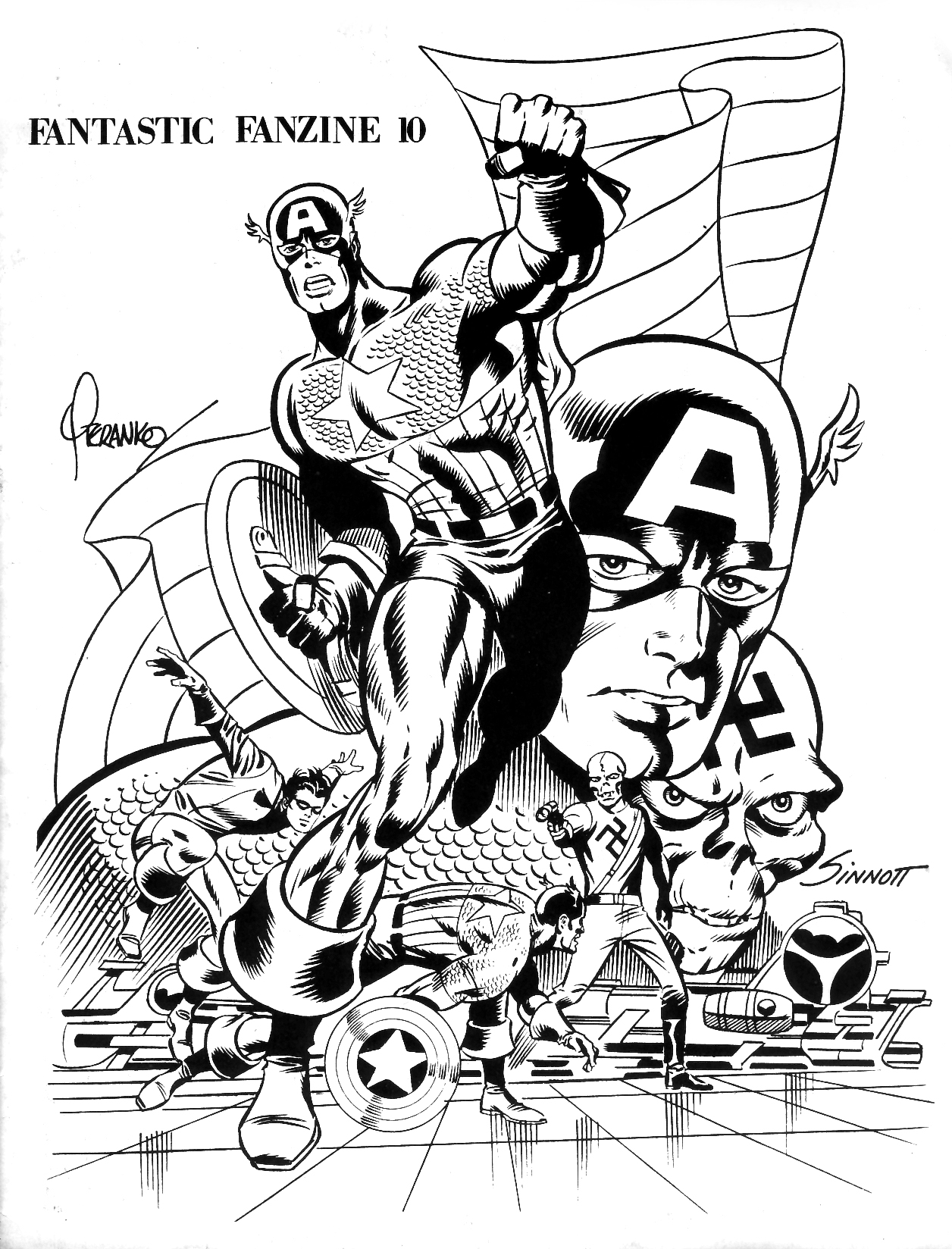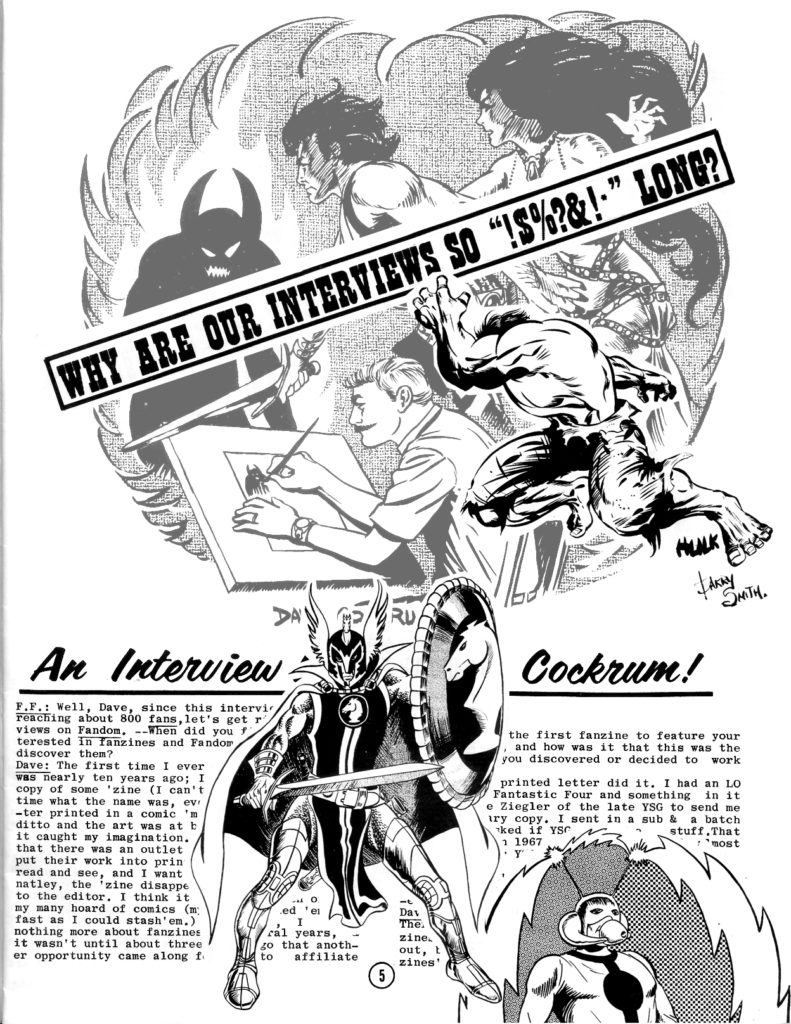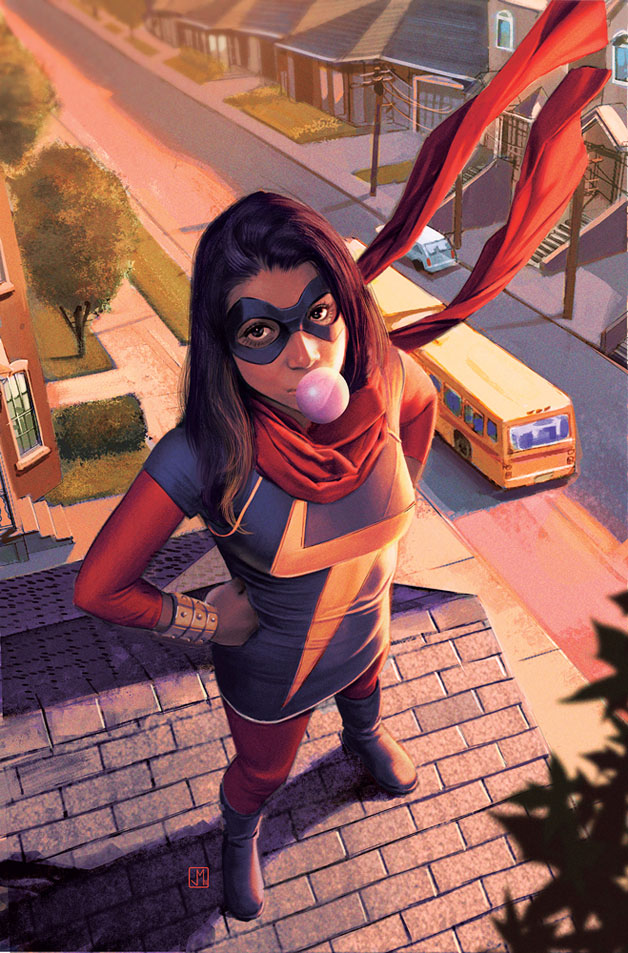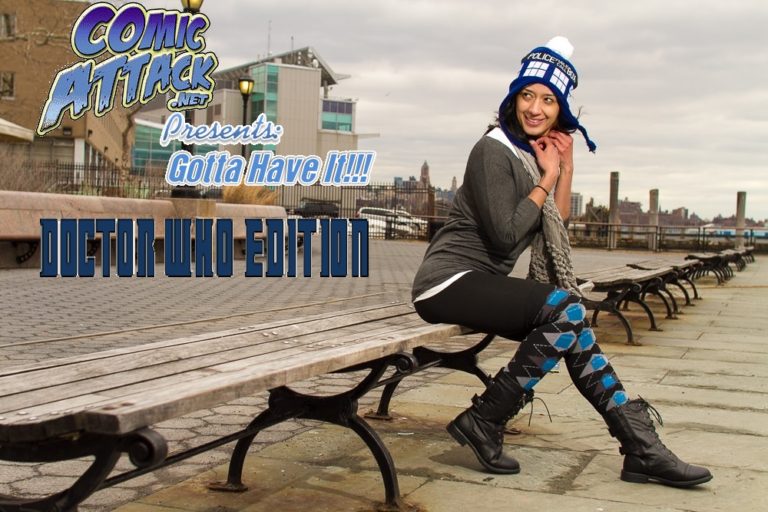Fantastic Fanzine 10 (1969)
Publisher: Alan Light (this second edition), Editor: Gary Groth

Along with The Collector, Gary Groth’s Fantastic Fanzine was probably the zine I was most excited to get my hands on when a new issue was published (and it continues to today in my never ending quest to get back issues I still haven’t seen). Gary had a knack of getting some of the biggest names, while still publishing both the best of fan art and the new kids on the block. The zine itself was started by a kid… a kid even younger than I originally thought.
Gary Groth started publishing Fantastic Fanzine in 1967 when he was 13 years old.
You heard me right. 13. He wasn’t even in high school yet.
When I asked Gary if those days seemed like it was another life, he said, “I do see it as another life — but isn’t childhood always another life? I was sweetly innocent of any true knowledge of what made art tick during those fanzine days, and finally acquired an education that made me a more discriminating reader, able to truly appreciate good work. The one trait I share with my younger self was the joy of making an object that you can hold in your hands. Back then, I got better and better at it — from a hideous little xeroxed fanzine to to a somewhat better looking offset series of fanzines and books. I published a collection of Bob Kline’s work that was so beautifully printed that I still look at it in awe. And I still can get that thrill when we receive an advance copy of a new book from the printer.”
The young Groth was full of that enjoyable combination of comic book fan fever, innocence and a can-do attitude that many fanzine publishers of this era possessed. This particular issue starts off with a typically dynamic Captain America cover by one of Groth’s early heroes, Jim Steranko. Of Steranko, Gary says, “I worshipped him. He was doing pretty exciting work in the context of the times and in the context of my 15-year-old self. He built a mystique around himself that I bought into. He was cool before I knew what cool even was; he acted like he just stepped out of an episode of Route 66. I vividly remember interviewing him in his small apartment in Reading, Pennsylvania. My Dad drove me up (I was too young to drive), which probably took three hours, and split for awhile while I interviewed him. It was very atmospheric, with cool jazz playing in the background. I wish I still had those tapes.”
Groth made a habit of meeting his heroes at conventions and hitting them up for artwork, and Fantastic Fanzine was always full of gorgeous art, by both pros and fans. Of course, many of those fans later joined the pro ranks. One artist who features prominently in issue ten is the late Dave Cockrum, who was still in the Navy at that time. Dave did an Ant-Man back cover, full page pinups of Ghost Rider (the old west version), The Black Knight, Captain America, and also contributed a number of spot illustrations throughout the issue (one of which is part of the Ink Stains banner). Much of it accompanies an interview Groth conducted with the artist, and it is a thorough and entertaining read. You can see small inklings of the interviewing skills that Groth would later bring to The Comics Journal. In a funny aside, Groth gets Cockrum’s wife Andrea to crack that her husband “doesn’t beat his wife and is kind to animals.” Groth first “met” Cockrum through the mail; it was Groth’s father who actually met the artist first. “Dave was in the Navy when I was putting out the ‘zine and stationed in Guam. My dad had to go to Guam on business and literally brought him a copy of the latest issue, hot off the presses. When I did finally meet Dave, he was living in New York and breaking into comics. I took a train up to New York and stayed with him and his wife for a couple of days and remember that they were splendid hosts and that I had a wonderful time. I’m not sure why I think this (whether it’s based on empirical information or just my gut) but I don’t think Dave approved of the critical attitude of The Comics Journal, and we lost touch over the years.”
Other fan artists who were part of a loose group of an FF stable of sorts contributed spots and pin ups as well, including Al Grinage, Mike O’Neal, Dave Russell, Jay Mike, Dennis Fujitake, and John Fantucchio; as well as Dave Transue, Jeff Rinehart and Bill Black.
The professional artists represented in issue ten, aside from Steranko, are Tim Kirk and Bill Everett. One curious Kirby-like illustration of a flailing Hulk is signed Barry Smith…yes, that Barry Smith. Groth remembers all of these artists well and has something to say about each one.
Speaking of first rate guys, I also met Barry Smith (pre-Windsor), who was nice enough to send me a few illustrations for my fanzine and who has since gone on to become a good and close friend. I’ve had the privilege to publish several of his books over the last decade and hope to publish a couple more. I still have a few long letters he wrote me from England circa 1969.
You may remember John Fantucchio from the column featuring The Collector. Of John, Gary says: “(He) had an intimidating gravity about him. He lived in Alexandria, Virginia and I’d visit him as much as he’d let me. He was also incredibly gracious, but he was a little older than Bob (Kline) and felt more like a grown-up. I attended Obama’s inauguration and while I was in town, I had dinner with John and his wife Mary. He’s still the same, just a little whiter. We went back to his place and he showed me his studio, which I’d never seen before and I hadn’t realized the breadth of John’s skills — he’s a talented painter in a realistic mode as well as a sculptor. It was great reconnecting with him.” Gary continues below.
I probably met Dennis Fujitake at a comic convention, but only years after I started publishing him. He and I are closer to the same age. He was an incredibly good-natured guy that I loved working with. In my first year of college, when I was still dabbling in publishing ventures, I published a comic of his work with an incredibly pretentious title (that was mine) — I forget exactly what it was called, but it was something like A Book of Pictorial Narratives — presaging the widespread pretentiousness of today. Dennis was a skillful, versatile artist, obviously influenced by Ditko but with with a buoyant, playful, lighthearted charm to his work. I had lunch with him in Hawaii six or seven years ago with my Dad and my son, and he regaled my Dad with all kinds of wild stories that I’d forgotten about when he stayed with me after a San Diego con.
Dennis went on to do the whimsical and enjoyable series, DalGoda, among other titles.
As I feature other issues of Fantastic Fanzine, you will read about other artists and writers Gary worked with throughout the life of the zine, including Berni Wrightson, Sal Buscema, Robert Kline, Howard Chaykin and many others.
It should also be mentioned that, even at an early age, Groth placed a premium on good writing as well. Included in issue ten are articles and fiction by writers such as Tony Isabella, Dwight Decker and Bill Cantey, with the subject matter spanning the Comics Code, horror artists, and the western Ghost Rider character, among others.
Since it is common knowledge that Groth went on to take over The Comics Journal early in its publishing life and then lead it through many years of top notch comic criticism, you might think the jump from FF to TCJ was a logical and planned step. However, as Groth says, “I hadn’t the slightest idea what I really wanted to do; I was not a long term thinker and my brain didn’t have anything rattling around in it that could be considered as thoughtful as a “goal.” I was just having so much fun putting the ‘zines together, making friends, and talking to artists I admired that I didn’t think beyond that. My path was not carefully mapped out, but ad hoc. In 1973, Roy Thomas offered me an assistant editor’s position at Marvel, but I demurred because I didn’t think I could live in New York on the salary he was offering; so, I went to work for Steranko instead for $15 a week. I’m not sure what I was thinking. But I was obviously flailing about, without a goal in sight.”
Groth might have thought he was merely flailing, but he still managed to produce one of the most enjoyable and well illustrated zines of the 70s. You will certainly be seeing other issues represented in this space at a later date. As always, please please please download the pdf from my website so you can see all of it in large format!
Some wonderful recent work from Dennis can be seen here.
I didn’t realize Bill Black had been in comics for 40 years, but you can read an interview with him here.
In two weeks, be here for No Sex 14 from David Heath Jr. and featuring early work by Gilbert Hernandez!
Ken Meyer Jr.
kenmeyerjr@yahoo.com






Another fascinating article Ken, I’m really enjoying this series!
Great quotes Ken!
I’m blown away that Groth started publishing at the age of 13. Can you imagine if that happened today? Crazy.
I’ve been reading these, and wondering how these would go over today. With all the fuss made about copyrights these days, and with the Internet, I wonder if fanzines would be successful (as successful as they could be then, anyway). I suppose instead of passing around a printed paper, it would be an online publication. Which would sort of kill the feel of it, I would think.
Reading your articles, this reminds of the early days of anime, when people would pass around bootlegged (or legit) VHS tapes. Precious, beloved and rare commodities. Not to mention expensive. Because that was the only way to get it.
I also recall a fan magazine for the musical Phantom of the Opera, 10 or so years ago, that was pretty neat.
Everything about these fanzines just says “labor of love” to me. It’s a lot of fun reading about how these things came about.
Thanks for the comments…4 in the first day, whoohoo!
Kristen, you hit it on the head…for 90% of these, there were very much a labor of love…surely, very little or no money was made. In fact, in most cases, money was probably lost! I remember really loving getting these in the mail, contributing to them, and being a part of the whole scene!
Andy…yeah, I am amazed at Groth as well…and he was meeting his heroes at this young age as well…including Steranko, Frazetta, Smith, etc.
…oh and ZR, glad you mentioned the downloads…I only show a tiny fraction of each zine in the column…get the downloads while you can, who knows when the bandwidth will run out!
I also should have credited the always great inker, Joe Sinnott, on the cover.
Nice work, Ken. I’ve just posted on Twitter about this installment:
http://twitter.com/PoopsheetComics/status/4831067426
Rick, thanks very much! Any little bit will help, I am sure!
Hi Ken – Thanks for the trip down memory lane! It was a fun time, and Gary was an exceptional entrepreneur at that young age. It looks like he fulfilled his dreams! I think you’re doing a great service to a new generation, and you will be part of the history of comic fandom. Best regards, John G. Fantucchio
Good article, Ken – very interesting. It was fun reading about so many names I had almost forgotten about after all this time.
Thanks for dropping by! Folks, Alan is the reason I got into fandom in the first place, waaaaaay back in 1971! Partially the reason I started drawing!
nice bad, Keith, good article. I enjoyed it.
I just saw the great John G. Fantucchio’s comment…and he isn’t even online very much! Thanks very much, sir, for stopping by! Sir Spikiness speaks!
I was an avid fanzine contributor and reader along with my childhood freind and fellow comic artist Paul Power, I remember all that enthusiasm for Jim Steranko,Dave Cockrum, Barry Smith and John Fantucchio. Paul am I used to pore over every line and brush stroke susing the compositional elements and excited about how they spotted the blacks in each picture, the big thing was how they made each pose and muscular rendering work as a piece of art. I would love to have a copy of all those old fanzines again. Thanks for article…regards Arto
Well, Arto, you can download the pdf, you know, which is the next best thing! Is that Paul Power the same Paul that worked for Marvel?
Sorry not the same, the Marvel Paul is Powers. Paul Power is also a storyboard artist – movies like RoboCop/Celestine Prophecy etc… he had some comics “East meets West” with professor OM. Anyhoo thanks, I will download NOW!!..regards Arto
Ahhh…yeah, now that you mention it, I see the difference. Thanks for dropping by and downloading it…I can only show so much in the column!
Great job, Ken!
My very first published artwork was in TCJ, many years ago before I broke into comics. Boy, what a thrill to see my first work in print!
I know the feeling, Gary. My first work was inked by Brent Anderson, right when he was turning pro…an illo of Bruce Lee and published in a convention book.
Pingback: Ink Stains 15: Fantastic Fanzine 12